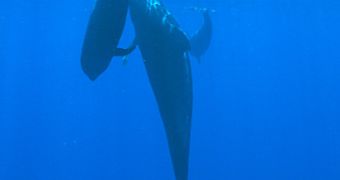Late on Sunday, a group of approximately 194 pilot whales and 7 dolphins beached themselves on an Australian coast, wildlife officials announced, with many of them dying shortly afterwards. Out of the original group, only 54 were alive on Monday morning, when a long and hard rescue effort was mounted so as to return the animals to the water. King Island, the place where the stranding took place, is located between the island-state of Tasmania and mainland Australia.
“It's amazing, some will die straight away, some will survive for days. These are fairly robust animals, pilot whales, we experienced that in the past. While they're alive there is a chance,” Chris Arthur, a representative of Tasmania's Parks and Wildlife Service, told the Australian state radio. He added that, of the group that was still alive on Monday morning, most could be saved, if the effort was swift and decisive. The operation is currently on-going, and it will hopefully turn out to be a success.
Arthur also pointed out that more than 150 people turned out to assist in the rescue effort. They all attempted to remove the whales from the land and place them back in deeper waters. Off the coast, a large pod of animals is expecting for their former group members. These creatures always travel in such groups, which could have reached impressive sizes, if the whales hadn't been hunted to the point of extinction.
Andrew Wardlaw, the general manager of the King Island Council, shared for the local radio that “Families, children, mums and dads, grandparents all here helping out doing their bit under the guidance of a local parks ranger.”
Authorities from Australia and New Zealand often meet with this type of problems, as large groups of whales get stuck in the shallow waters and sands of beaches located on various islands. There is currently no scientific explanation for why this is happening, but theories include disturbances in eco-location, pollution, and even the noises that human activities around the area generate. This commotion may, scientists consider, be strong enough to interfere with the whales' natural sonar, which guides their movements and helps the animals establish their position and direction.

 14 DAY TRIAL //
14 DAY TRIAL //